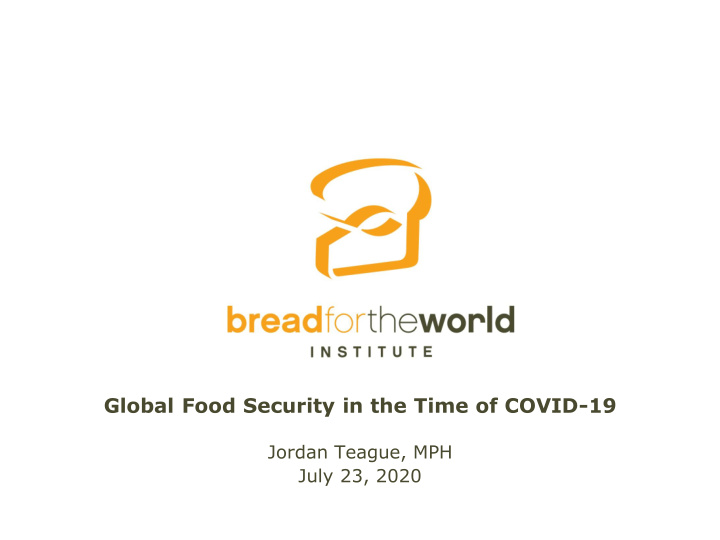



Global Food Security in the Time of COVID-19 Jordan Teague, MPH July 23, 2020
AGENDA 1. Global food supplies 2. Local food systems 3. Estimated impacts 4. Countries impacted 5. Is famine a risk? 6. Taking action
Global food supplies of staples are stable
COVID-19-related disruptions are in the local food system www.bread.org Transport Reduced Import/export Less access to delays remittances restrictions food Closed markets Unemployment Movement Less food Labor Increased food limitations available shortages prices
Without urgent action, poverty and hunger are expected to rise www.bread.org 140 million more people could fall into extreme poverty (IFPRI) 120 million more people could fall into hunger (FAO) 130 million more people may face acute food crises (WFP) 113 million people may need emergency food assistance (FEWSNET) 5 million more children could become wasted (World Vision)
www.bread.org Source: FAO-WFP Early Warning Analysis of Acute Food Insecurity Hotspots
What can be done? www.bread.org Social protection - cash transfers, food banks, school meals at home Create employment - public works, food/cash for assets Access to finance for small/medium businesses Boost trade Homestead food production to improve diet quality Continue maternal and child health services Community-based management of malnutrition
IS FAMINE A RISK?
Is famine a risk? “In a worst -case scenario, we could be looking at famine in about three dozen countries, and in fact, in 10 of these countries we already have more than one million people per country who are on the verge of starvation.” – David Beasley, Executive Director of the World Food Program
What is famine? Source: Oxfam America
Source: Oxfam America Urgent action is required before famine - now!
TAKING ACTION
We are asking for $12 billion for global COVID-19 response in supplemental funding bills
Join us! Bread.org/OL
www.bread.org
Recommend
More recommend